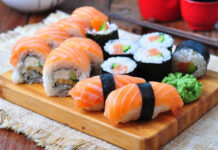Asian fashion is diverse and varied, with each country in Asia having its unique fashion styles and trends. Asian fashion has gained worldwide recognition and has become influential in the global fashion industry. Here are some notable aspects of Asian fashion:
- Traditional attire: Many Asian countries have rich traditional attire that reflects their unique cultural heritage. For example, the kimono in Japan, the hanbok in South Korea, the cheongsam in China, and the saree in India are iconic traditional garments that are still worn on special occasions and cultural events.
- Fusion fashion: Asian fashion often blends traditional and modern elements, resulting in unique fusion styles. Designers and fashionistas in Asia often experiment with combining traditional textiles, patterns, and techniques with modern cuts, silhouettes, and embellishments to create innovative and contemporary fashion statements.
- Street style: Asian cities like Tokyo, Seoul, and Shanghai are known for their vibrant street fashion scenes. Street style in Asia is often characterized by bold, quirky, and avant-garde looks, with a mix of high-end and affordable fashion, unique accessories, and creative layering.
- Modest fashion: Modest fashion, which emphasizes covering up and modesty in dressing, is popular in many Asian countries with conservative cultural norms. Modest fashion styles, such as hijab fashion in Muslim-majority countries like Indonesia and Malaysia, showcase creativity and diversity in the use of fabrics, colors, and patterns.
- K-pop and J-pop fashion: The influence of K-pop (Korean pop) and J-pop (Japanese pop) music and entertainment has had a significant impact on Asian fashion. K-pop and J-pop artists are known for their unique and trend-setting fashion styles, which range from cute and preppy to edgy and avant-garde, often incorporating a mix of streetwear, high fashion, and unique accessories.
- Luxury fashion: Asia is a major market for luxury fashion, and many Asian countries have a growing affluent class that embraces high-end fashion from global luxury brands. Luxury fashion in Asia is often associated with prestige, status, and sophistication, and Asian consumers are known for their discerning tastes and preferences in luxury fashion.
- Sustainable and eco-friendly fashion: There is a growing awareness and demand for sustainable and eco-friendly fashion in Asia, with an increasing number of designers and brands focusing on environmentally friendly and socially responsible practices. From upcycling and recycling to using organic and natural materials, sustainable fashion is gaining popularity in Asia, reflecting a growing concern for environmental issues.
- Online fashion and social media influence: Asia has a thriving e-commerce and social media landscape, and online fashion shopping and social media influencers have a significant impact on Asian fashion trends. Many Asian consumers are avid online shoppers and follow fashion influencers on social media platforms, leading to the rise of online fashion retailers, fashion bloggers, and fashion influencers who shape fashion trends in the region.
- Emphasis on quality and craftsmanship: Asian fashion often places a strong emphasis on quality and craftsmanship, with a tradition of skilled artisans and craftsmanship in many Asian countries. Traditional textile techniques, hand embroidery, and intricate detailing are often valued in Asian fashion, showcasing the rich cultural heritage and craftsmanship.
- Gender-neutral fashion: Gender-neutral fashion, which challenges traditional gender norms in dressing, is gaining popularity in Asia, particularly among the younger generation. Many Asian fashion brands are incorporating gender-neutral designs and breaking away from traditional gender-based fashion stereotypes, promoting inclusivity and diversity in fashion.
It’s important to note that Asian fashion is incredibly diverse, and these aspects may not apply to all countries or regions within Asia. Fashion trends are constantly evolving, and Asian fashion continues to be influenced by global fashion trends, cultural shifts, and societal changes. Nonetheless, Asian fashion is known for its creativity, diversity, and unique




